Content:
- What are peonies
- Wild peony
- Blue and blue peonies
- Chinese peony
- Japanese peony
- Black peonies
- Raspberry peonies
- Mountain peony
- Lilac peonies
- Obovate peony
- Steppe peony
- Terry peonies
- Scarlet peonies
- Needle peony
- Peonies peach
- Peony white
- Dark peonies
- Bordeaux peonies
- Dwarf peonies (or patio)
- Early peonies
- Anemic peonies
- Red peonies
- Pastel peonies
- Long-flowering
- Fuchsia peonies
- Features of planting and care
- Features of feeding
- Treatment of diseases
- Pest control
There are 34 types of peonies, in each subspecies there are several varieties. You need to sort out a large number of beautiful flowers in order to find the best one for yourself.
What are peonies
Peonies are the oldest garden plants. Bright natural colors and a chic spreading bush have attracted gardeners since ancient times. This ornamental plant serves as the basis for the creation of landscape forms due to its texture and color. In addition, the varieties are very unpretentious and easy to care for. The bush can grow without transplant for up to 50 years. Peonies are among the top 10 most popular perennial horticultural crops in the world. More and more fans of these wonderful flowers are becoming all over the world.
The thick aroma and delicate inflorescence of peonies leaves no one indifferent. They vary in color. What color are peonies? There are burgundy, pink, white, crimson, cherry and cream flowers. Varieties have been bred in which the core of the flower is darker and the outer petals are lighter. Or vice versa. This contrast benefits from monochrome colors. Peony species can vary in shape: double, semi-double or non-double.
Dutch peonies are distinguished by denser, neat buds. Flowers from Holland are more durable. They do not fade much longer and the petals do not crumble, they just dry out.
Purple peonies. The purple hue is quite rare. More often in the gardens come across dark red, burgundy or purple peonies. The most famous purple ones:
- Imperial crown. Differs in large flowers in the shape of a ball. The size of flowers reaches 25 cm in diameter. They can bloom for up to two weeks or more, especially at low temperatures.
- The black crown has beautiful, shiny, deep red petals. The approximate diameter of the flowers is 17 cm. This variety is hardy, grows well in temperate latitudes. In the northern regions, the plant should be covered for the winter.
- Another frost-resistant variety is the Purple Ocean. This species is distinguished by a beautiful shape of flowers in the form of a crown, as well as a thick, refined aroma. Flowering lasts 2-3 weeks. The diameter of the flowers is about 16 cm.
Wild peony
Wild peony is rare in nature. This perennial shrub grows in the steppe areas. It has dark red or bright purple flowers with a yellow core with a diameter of about 10 cm. Foliage of pale green color resembles coniferous needles from a distance. Flowering lasts about 2 weeks, like the garden counterparts. However, the wild peony blooms much earlier than the garden one.
Blue and blue peonies
Breeding blue flowers has proven to be a very difficult task for breeders. It is rather difficult to find them in Russia. Russian gardeners subscribe varieties of blue and blue peonies from foreign websites of online stores. Many offers for the sale of unique flowers come from their homeland - from China.
Sellers lure with names:
- Blue lotus (Blue Lotus).
- Blue sapphire.
- Deep blue Sea.
Chinese peony
Recently, peonies from China have become very popular among domestic flower growers. The homeland of peonies offers several varieties with romantic names:
- Blush with dew drops.
- Transparent veil.
- Frost in a pink haze.
According to the reviews of Russian gardeners, all Chinese varieties are strongly terry.
Japanese peony
Russian flower growers appreciated the beauty of Japanese flowers. They have become very popular due to the special structure of the flower. Wide petals are arranged in 1-2 rows, and in the core there are very narrow petals called staminodes. Very lush staminodes form a multi-colored ball in the center. The unusual shape of the flowers is very mesmerizing. It is better to put such peonies in a vase one by one. These garden plants are usually low in height and frost resistant.
Black peonies
It is a variety of dark purple or maroon flowers. In cloudy weather or poor lighting at home, they can actually be mistaken for black. The most famous varieties are:
- Sacred mountain. The flowers have a dark purple hue and are shaped like a crown. Blooms late in mid-summer.
- Flowers of the Black Pearl variety have a maroon hue. Blooms late, by mid-summer.
- Very dark burgundy peonies Black Panther. Semi-double flowers.
Mesmerizing black peonies look exquisite and unusual.
Raspberry peonies
Considered one of the classic colors. The color palette ranges from deep pink to deep crimson. Some varieties from a large number of raspberry peonies:
- Kansas - the height of the bush is up to 100 cm, the flowers are very double with a diameter of 10 cm of a rich raspberry-red color.
- The buds of the Alexander Fleming variety are pale crimson with a diameter of about 12 cm.
- Beautiful flowers of the Karl Rosenfeld variety are dark red with yellow stamens.
Mountain peony
Perennial shrub about 60 cm high. Frost-resistant, bowl-shaped flowers with a diameter of 6 to 12 cm. The petals have wavy edges. Mountain peony flowers can be painted cream or pale pink. Grows naturally in the Eastern part of Russia. Cultivated by gardeners.
Lilac peonies
Frequent guests in the gardens of florists. The most popular flowers of the Flower Rosa variety have a delicate lilac hue. Another famous variety is Sarah Bernhardt. Early flowering, flower size about 16 cm. The shade shimmers from pink to lilac. Leaves are dark green in color.
Obovate peony
Forest plant. It differs in its appearance from the usual lush peonies. The bush is never too thick. And the flowers are similar in shape to tulips, the colors are white or pale pink.
Steppe peony
In nature, it grows in the south of Western Siberia. The height of the bush is small - from 15 to 50 cm. The leaves are small, needle-like. Flowers are small in size, only 6-8 cm in diameter, purple color.
Terry peonies
These are the most lush peonies of all varieties. Flowers are usually large, ball-shaped. There are a great many varieties of terry peonies. For flower growers, the most popular varieties are often frost-resistant to survive the winter frosts:
- Red Spyder. These low-growing plants, 30-50 cm high, are notable for large, bright crimson flowers.
- Rosella blooms early, from the end of May. The flowers are large, dark pink in color.
- The Alexander Dumas flower is pink-lilac, its diameter is 15 cm.The height of the bush is up to 90 cm.
Scarlet peonies
They are deservedly considered royal flowers. A bouquet of these peonies represents passion and wealth. The bright scarlet flowers of Command Performance and Henry Boxtos adorn many gardens. Vigorous bushes up to 90 cm with large (up to 22 cm) lush flowers. The Henry Bokstos variety has a denser bud.
Needle peony
It got its name from the shape of the leaves that look like needles. The bush is fluffy, but small - up to 50 cm.The flowers are bright red, purple.
Peonies peach
Very gentle and touching. Wedding bouquets are often ordered from them. A lot of large semi-double soft peach buds are characteristic of the Julia Rose variety. It enjoys well-deserved love among Russian gardeners, not only because of its beauty, but also due to its good frost resistance.
Peony white
Very common among gardeners. The pure white flowers stand out beautifully against the dark green bush. Popular varieties with double and semi-double buds:
- The Duchess de Nemours variety is distinguished not only by its beautiful large snow-white flowers, but also by an exquisite aroma resembling a lily of the valley.
- Festival Maxima is a very famous variety with a rose scent. Bright white lush inflorescences, the middle of thin petals, slightly outlined in red. Large bush up to 90 cm.
- Shirley Temple is distinguished by dense semi-double pure white flowers of large size.
Dark peonies
They attract with their mystery. A palette of shades - from dark cherry to dark brown. The dark cherry peony Bob is originally from the USA. Flowering begins early, large double flowers up to 22 cm in diameter. Another American-born Chocolate soldier. Differs in very beautiful textured flowers of dark red-brown color.
Bordeaux peonies
Luxurious flowers of a wine shade. These include, first of all, the abundantly flowering Bordeaux variety. Buds of medium diameter burgundy with bright yellow stamens in the middle.
Dwarf peonies (or patio)
Does not exceed 50 cm in height. Plants are usually hardy with abundant flowering. These include Rome Patio pink, no more than 50 cm high. For lovers of the species, creamy white Madrid, scarlet Oslo and others were bred.
Early peonies
They bloom in late May and bloom until mid-June. From varietals, non-double varieties usually bloom earlier. For example, pink Coral Fay, white Claire de Lune. Early cultures often come in red: Convoy's terry red, Buckeye Bell's semi-double dark red.
Anemic peonies
It is a transitional form from terry to Japanese. The bud is round in shape with 1-2 rows of petals and short petals in the middle. The colors of the layers may vary. The Primavera variety is a representative of anemic peonies. The flower is very original: creamy white petals are arranged in rows in a circle and a bright yellow ball in the middle. Romantic Raspsods with delicate pink petals and a pink-beige ball in the middle.
Red peonies
Bright, passionate and passionate. Shades are very diverse in terms of palette. From bright red to cherry and cranberry. A striking representative of this species is the Red Magic variety. Large double inflorescences of bright red color with shiny petals will decorate any garden. This type also includes terry Red Grace, Carol.
Pastel peonies
Favorite plants of florists. They are an excellent basis for floral arrangements, and are also in great demand in flower shops. For lovers of pastel-colored peonies, there are amazing cream-colored flowers with a slightly yellowish middle of the Brother Chuck variety. The petals are slightly wavy, the inflorescences are large. And also delicate Pastelegance with densely double large flowers up to 22 cm. Buds with pastel pink-peach color.
Long-flowering
Any gardener is happy to breed long-flowering peonies. Their flowering period is 15 to 18 days. These include: Pearl placer variety. A soft pink flower of medium size, and the modified stamens are colored yellow-pink. The bush is quite compact. The inflorescences of the Dresden Pink variety are terry, in the form of a ball. The petals are pink with silvery tips. Blooms late, bush height 80 cm.
Fuchsia peonies
Another favorite of floristic salons. Representatives - bright fuchsin double flowers of the Bouquet Perfect variety, fuchsia pink flowers Purple Spider. As well as lilac with white and purple stripes semi-double flowers Morning Lilac medium size. Early variety.
Features of planting and care
Garden peonies are quite unpretentious. They do not cause much trouble if they are fed and monitored on time.
First you need to choose a landing site. You need to do this carefully, since the plant will grow on it for at least ten years. A site for a plant should be chosen on the sunny side so that there is enough light for 4-5 hours a day. The plant should be protected from drafts so that there is a fence, hedge or other shrubs nearby. It is necessary to beware of planting in the lowlands so that the roots do not rot.
Experts advise planting in the fall. At this time, the stems and root system go into a dormant state and will more easily tolerate planting. In the spring, the rehabilitation period will be longer. If the division has already been prepared, then planting a plant in open ground is carried out in several stages:
- It is necessary to excavate a cone-shaped hole 60 cm deep.
- Prepare a drainage layer.
- Form a nutrient layer. Composition: a mixture of compost, 100 g of dolomite flour, 200 g of superphosphate, 300 g of ash and 70 g of potassium sulfate.
- Add soil so that 15 cm remains to the bottom of the hole.
- It is necessary to place the seedling in the hole, correct the protruding root.
- Place the lower bud on the stem 5 cm below the ground.
- Cover the roots with soil, compacting the earth.
- Water abundantly.
Care consists in proper watering, feeding and pruning. It is imperative to cut off dead leaves and stems so that they do not lead to the development of diseases. Watering is necessary rarely, but abundantly. About 2-3 buckets per adult plant.
The shrub should be watered at the root, not on the leaves. Leaves may turn yellow.
Features of feeding
When the snow just melts, the soil around the young bush should be watered with a solution of potassium permanganate. Dissolve 1 g of potassium permanganate in a bucket of water and process.
In the spring, the plant needs to gain foliage and grow. The grown shoots are fed with ammonium nitrate with a solution of 15 g of chemicals per 10 liters of water. By mid-May, you need to water the shrub with mineral fertilizers. You should always feed it in the evening or in cloudy weather. Always in moist soil. Mineral fertilizers also need to be fed to the peony during the appearance of buds. How to make a mineral mixture:
- 10 g superphosphate;
- 5 g of potassium salt;
- 7 g of saltpeter.
Add the fertilizer mixture to a 10 liter bucket of water and water the soil around the bush.
With such a composition of mineral fertilizers, it is necessary to feed the flower during flowering. When the peony has faded, you should stop feeding. Do not stop watering. Loosen the soil around the plant from time to time.
Treatment of diseases
Almost all types of peonies are disease resistant. The exceptions are early flowering double hybrids. They are often susceptible to disease, but if action is taken, any plant can be cured.
Peonies usually attack a variety of fungi. Sometimes viral diseases can kill the plant. Great importance must be attached to the signs of the disease in order to make treatment on time:
- Rust. It is urgent to cut off the affected leaves and stems. Treat the bush with a 1% solution of Bordeaux liquid.
- Gray rot. Cut off diseased areas. Spray with 1% Bordeaux liquid solution.
- Powdery mildew. Treat the bush with a 0.2% Figon solution.
- Mosaic of leaves. Cannot be cured. The plant must be destroyed.
- Lemoine's disease. Does not respond to treatment.
- Verticillary wilting. Can't be cured. The shrub should be dug up, destroyed and the soil treated with bleach.
- Leaf spot. Does not respond to treatment.
Pest control
To grow a healthy plant, you need to carry out prevention and pest control on time. Otherwise, the plants can be significantly damaged.What pests can threaten peonies and methods of dealing with them:
- Ants. Spray the bush and the ground around with repellents.
- Aphids are a small insect a few millimeters in size. Small numbers of aphids can be collected by hand or knocked down with strong water pressure. With a large amount, it should be treated with Fitoverm.
- Gall nematodes. Remove and burn the plant as soon as possible to prevent pests from breeding. Disinfect the soil.
- Bronzovka. You need to collect the beetle by hand every day. Loosen the ground around the bush.
- Thrips. Spray with 0.2% solution of Karbofos. The procedure is carried out several times per season.
The decision to grow a beautiful garden plant like a peony is easy. Proper cultivation, attention and care, and treatment are necessary. Only in this case will the peonies bloom with lush and bright flowers.
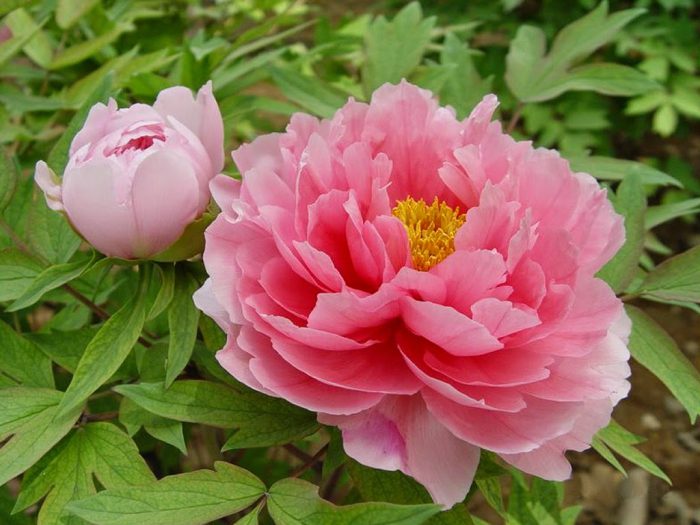
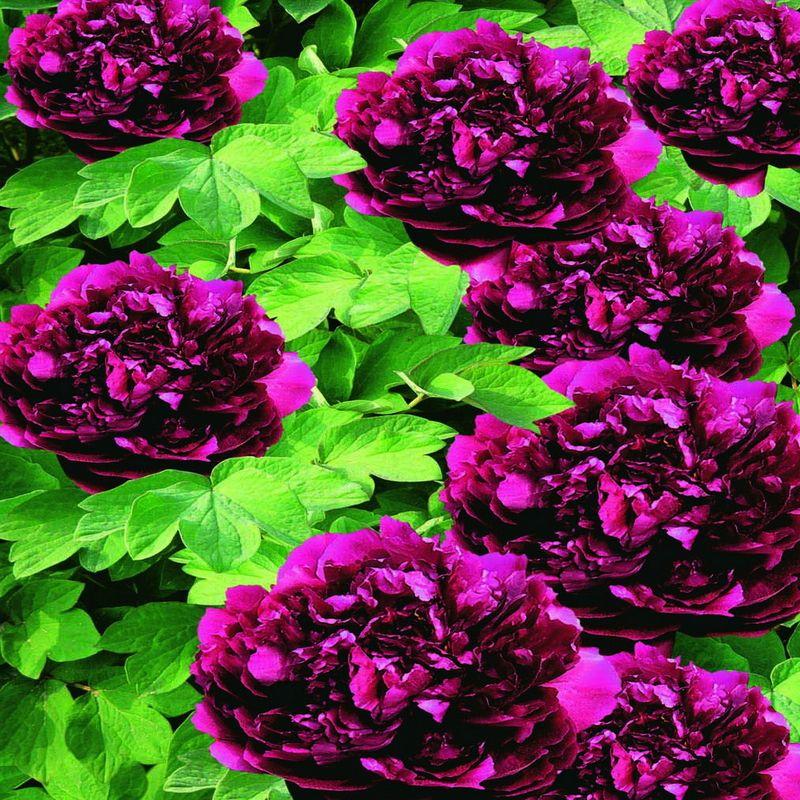
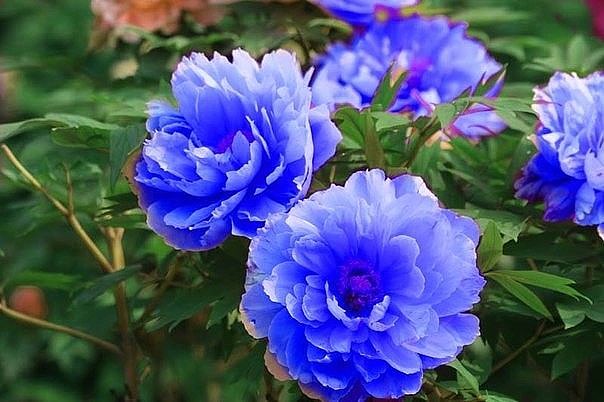
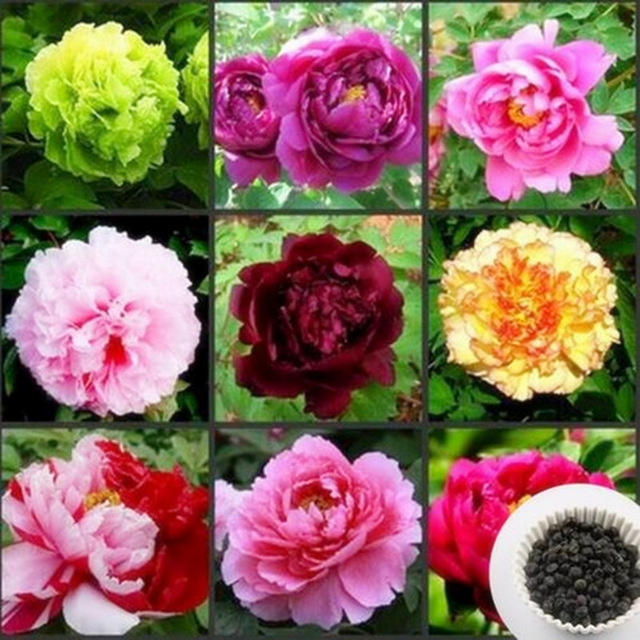
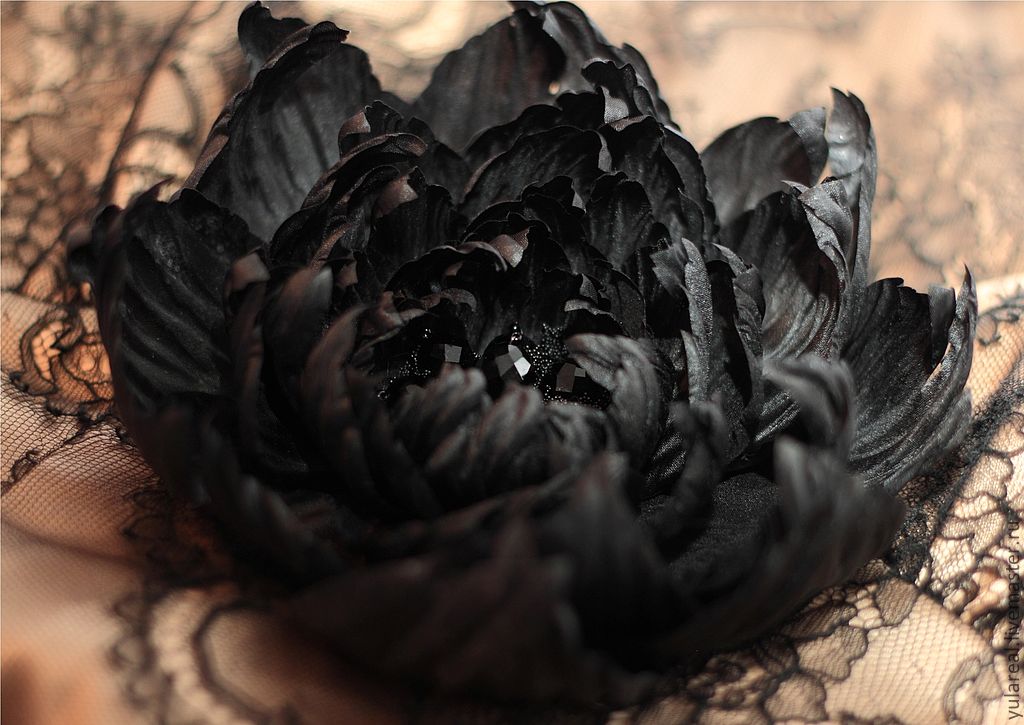
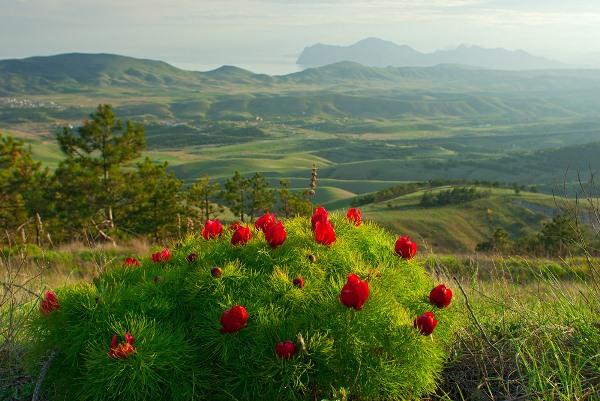
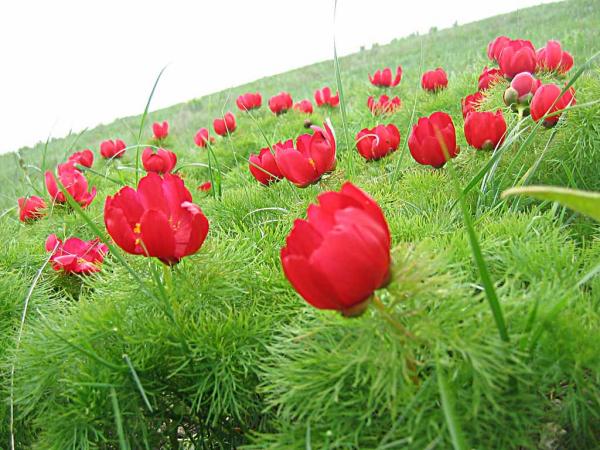
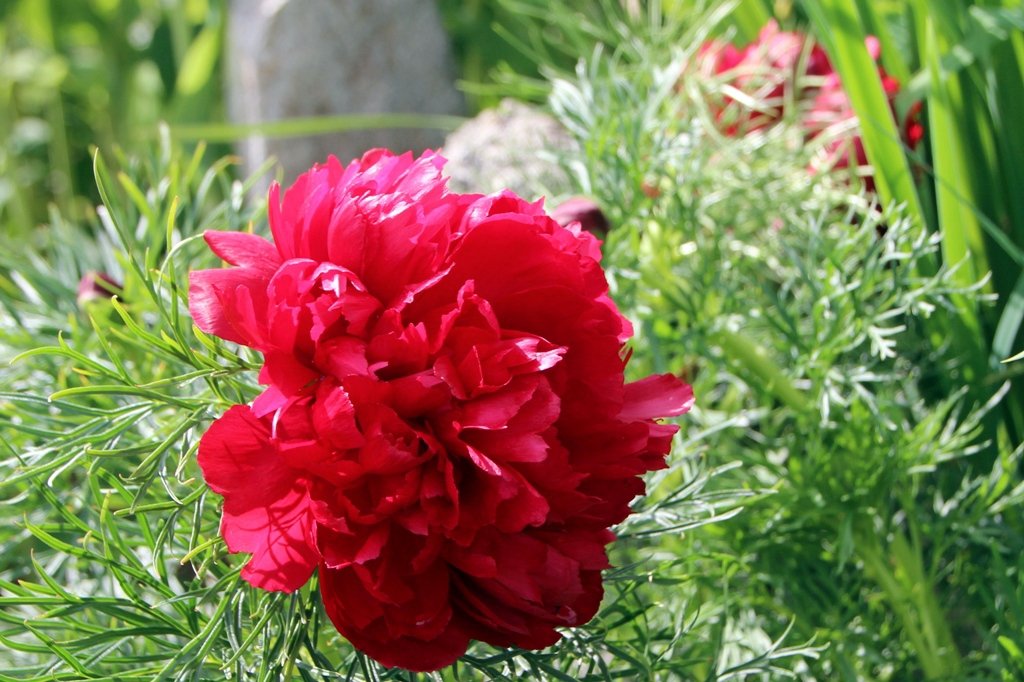
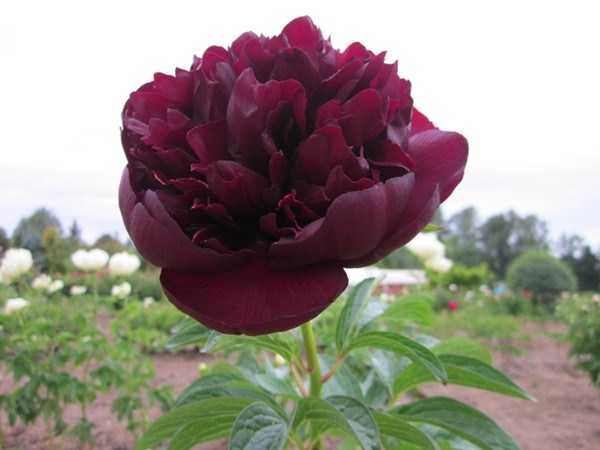
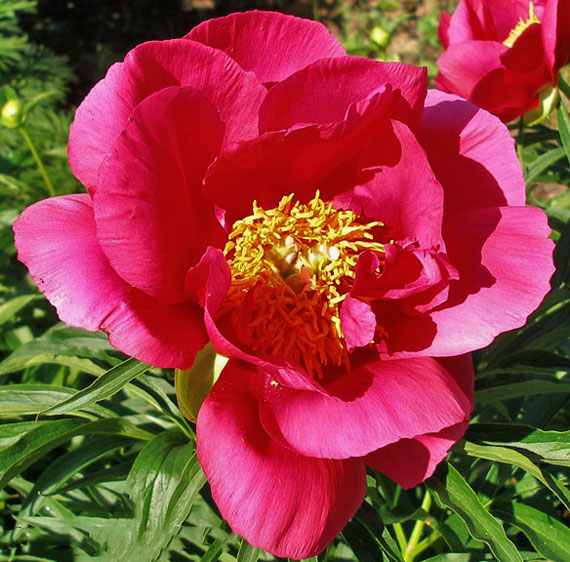
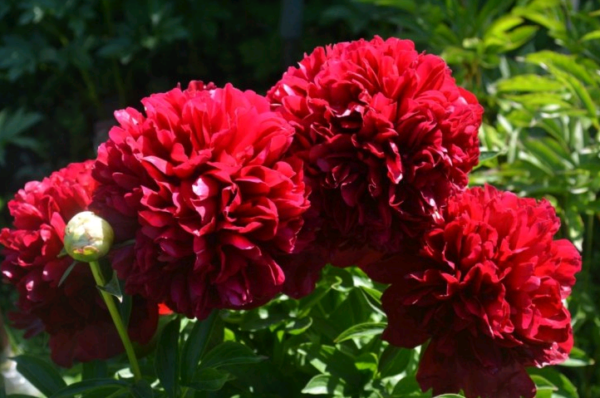
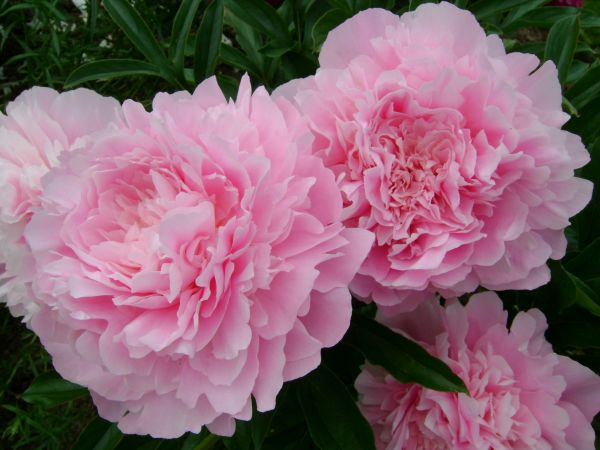

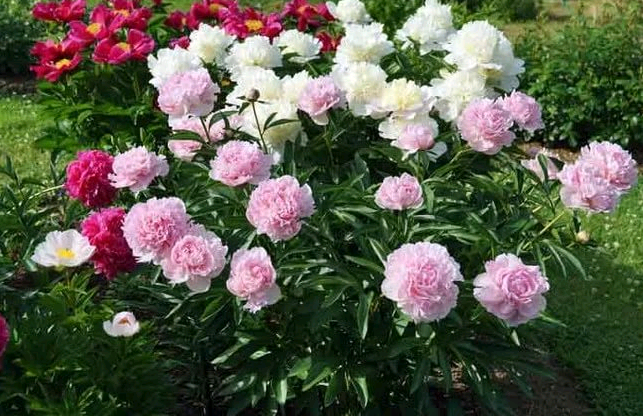
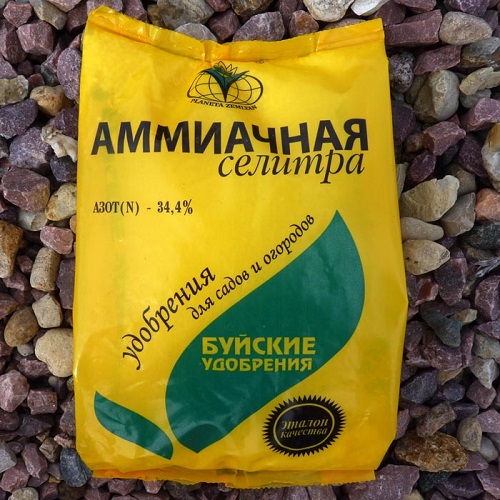
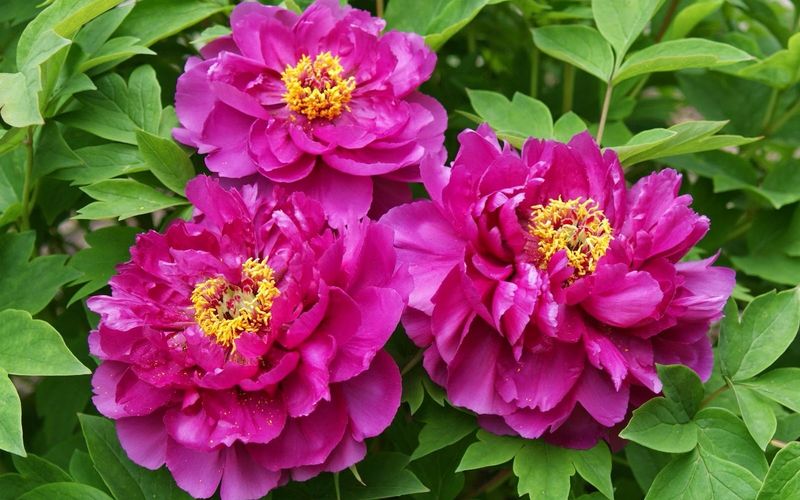
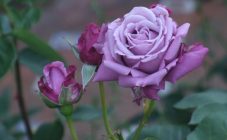
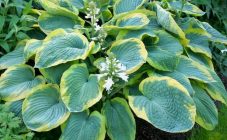











I am Natalia Glebova. V. resident of Ufa, Bashkortostan. I happened to have grassy seedlings that have been blooming since last year (i.e. the second year) last year was white, and this year they bloom pale pink. I would like to know the grade. If you can, then tell me. I named him Sakura.